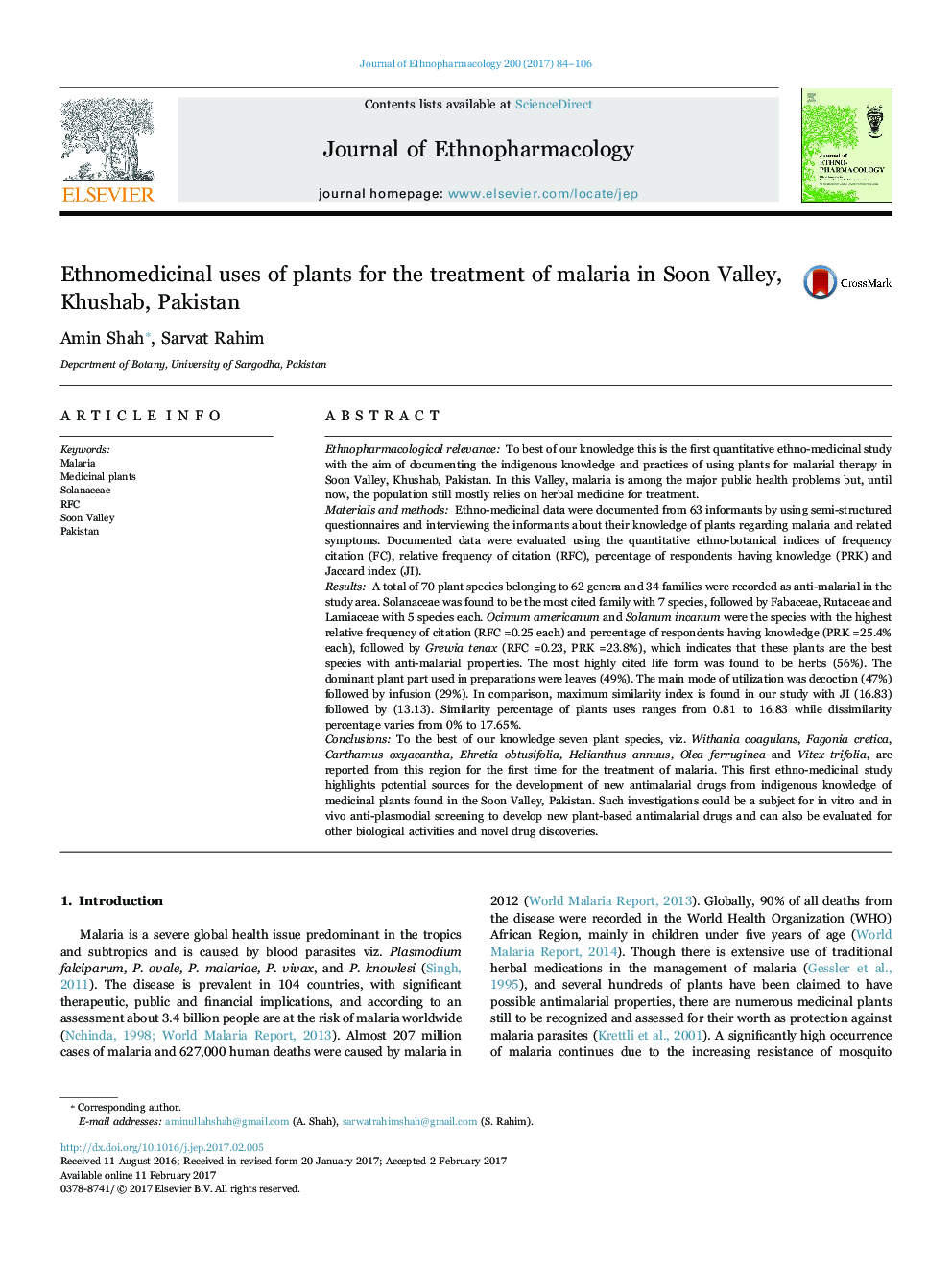| کد مقاله | کد نشریه | سال انتشار | مقاله انگلیسی | نسخه تمام متن |
|---|---|---|---|---|
| 5556171 | 1560362 | 2017 | 23 صفحه PDF | دانلود رایگان |
Ethnopharmacological relevanceTo best of our knowledge this is the first quantitative ethno-medicinal study with the aim of documenting the indigenous knowledge and practices of using plants for malarial therapy in Soon Valley, Khushab, Pakistan. In this Valley, malaria is among the major public health problems but, until now, the population still mostly relies on herbal medicine for treatment.Materials and methodsEthno-medicinal data were documented from 63 informants by using semi-structured questionnaires and interviewing the informants about their knowledge of plants regarding malaria and related symptoms. Documented data were evaluated using the quantitative ethno-botanical indices of frequency citation (FC), relative frequency of citation (RFC), percentage of respondents having knowledge (PRK) and Jaccard index (JI).ResultsA total of 70 plant species belonging to 62 genera and 34 families were recorded as anti-malarial in the study area. Solanaceae was found to be the most cited family with 7 species, followed by Fabaceae, Rutaceae and Lamiaceae with 5 species each. Ocimum americanum and Solanum incanum were the species with the highest relative frequency of citation (RFC =0.25 each) and percentage of respondents having knowledge (PRK =25.4% each), followed by Grewia tenax (RFC =0.23, PRK =23.8%), which indicates that these plants are the best species with anti-malarial properties. The most highly cited life form was found to be herbs (56%). The dominant plant part used in preparations were leaves (49%). The main mode of utilization was decoction (47%) followed by infusion (29%). In comparison, maximum similarity index is found in our study with JI (16.83) followed by (13.13). Similarity percentage of plants uses ranges from 0.81 to 16.83 while dissimilarity percentage varies from 0% to 17.65%.ConclusionsTo the best of our knowledge seven plant species, viz. Withania coagulans, Fagonia cretica, Carthamus oxyacantha, Ehretia obtusifolia, Helianthus annuus, Olea ferruginea and Vitex trifolia, are reported from this region for the first time for the treatment of malaria. This first ethno-medicinal study highlights potential sources for the development of new antimalarial drugs from indigenous knowledge of medicinal plants found in the Soon Valley, Pakistan. Such investigations could be a subject for in vitro and in vivo anti-plasmodial screening to develop new plant-based antimalarial drugs and can also be evaluated for other biological activities and novel drug discoveries.
238
Journal: Journal of Ethnopharmacology - Volume 200, 22 March 2017, Pages 84-106
